Types Of Pockets On Pants
Jump To:
One of the most important stylistic markers in the history of clothing is the pocket. We utilise pockets regularly since they allow us to store and transfer our personal items discreetly. Pockets, besides serving a functional purpose, are an important component of the apparel design process, resulting in a wide range of pocket styles. Pockets are a pretty prevalent feature of our clothing. They can be the focal point of an outfit or discreetly tucked into a side seam. There are various types of pockets we can find on different types of pants.
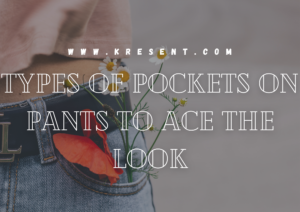
Slant pockets
We can find this pocket on the front of a pair of casual pants, jeans, or trousers. Starting at the waist, slash pockets go diagonally to the side seam. It does not matter if the line is straight or curved; tailors and clothing manufacturers always cut and sow these pockets on a slant. Other names for this type of pockets are scoop pocket or cutaway pocket.
The slash pocket on a pair of jeans is slightly different from the slash pocket on a pair of trousers, which is more slanting. A scoop pocket is a curved version of a slash pocket.
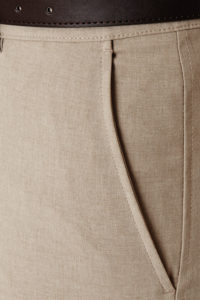
Accordion pockets
We can find these pockets on cargo and army-style trousers, as well as other types of outerwear. Accordion or bellows pockets have at least one gusset around the edges of the ‘patch’ area, which serves to push the pocket out from the main garment. We also call them expanding pockets.
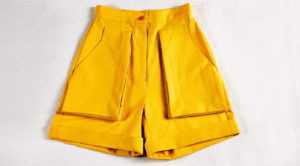
Inseam pockets
Sewn into the seams of our skirts, dresses, trousers, pants, and jackets are inseam pockets. We can sew them together to form a ‘grown on’ inseam pocket or as separate pattern pieces connected to a clothing section and then put together to form a pocket. We can also sew inseam pockets with unique embellishments or embroider them to make them stand out.
We can also sew these pockets in such a way that they appear to be invisible. The majority of inseam pockets are located in the ‘side seams.’ We can find these pockets in pyjamas, trousers, but we can also hide them in the side or princess seams of our clothes.
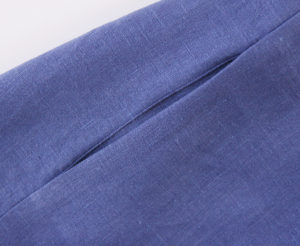
Inset pockets
These are pockets that have been ‘set into’ the main clothing section. Consider the welt pocket on a tailored jacket for a man, the jetted pocket on the rear of women’s trousers / pants, and the inside pockets on tailored jackets!
A seam pocket is a pocket that is stitched into a garment’s seam, with the pocket opening visible as a gap in the clothing.
A welt pocket is a built-in pocket with fabric welts running the length of it to reinforce the pocket opening.
An inside pocket is a pocket hidden inside of a garment.
Vertical pockets
We often choose pants with vertical pockets that run straight up the side seams to appear stylish and elegant. Because there is no pocket line intersecting the front rise of your pants, it can seem cleaner. If you are wearing pleated pants, though, a vertical slit will run perpendicular to the pleats. To be honest, such pockets are hard to come by, but some brands provide them as an option on custom made trousers.
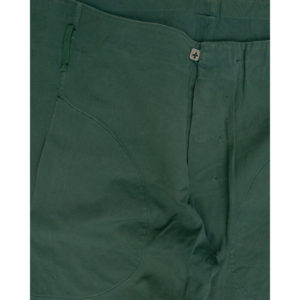
Frog-mouth pockets
Another type of pocket is the frog-mouth pocket, so named because of its likeness to a frog’s mouth. They are the polar opposite of the vertical slit pocket in that they run horizontally across the front of the trouser. As a result, the pockets become a prominent element of the pants.
They have an equestrian feel to them, and they allow you to pose with your fingers tucked in while your thumbs remain out. Because frogmouth pockets would interfere with pleats, they are best worn with flat-front pants.
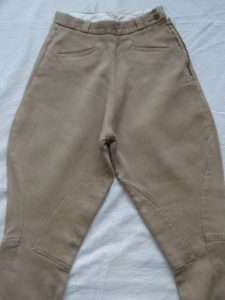
Coin pockets
If you’ve ever owned a pair of jeans, you’re probably aware of the coin pocket, a small, seemingly insignificant pocket that sits inside the larger one on the right front. Levi-Strauss created it to allow men to wear pocket timepieces while wearing denim. In the age of wristwatches, this pocket has become obsolete, serving more than a classic aesthetic than a practical purpose, however some men still use it to hold coins, mints, or a condom.
The coin pocket, along with the two front and two back pockets, is what gives the name “five-pocket pants” its meaning. Coin pockets can also be found in pants that are less formal than jeans, such as summer chinos, and clothing brands frequently pair them with standard slant pockets.
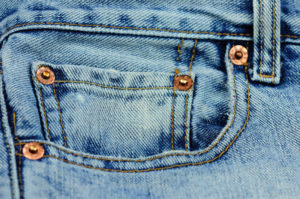
Back pockets
Surprisingly, the range of back pocket options on pants outnumbers the front pocket alternatives. You can have no pockets, one or two, buttons or no buttons, flaps or simply welts–quite a variety for something with such limited utility. Sure, you can stuff items in those back pockets, but not much if you plan on sitting for long periods of time.
Dress pants would generally have plain jetted back pockets, maybe with buttons, as with other garment design aspects. Simpler designs usually indicate more formal wear. We can usually add flaps to the trouser in order to make it more informal. Patch pockets on the back, especially jeans, are particularly informal.
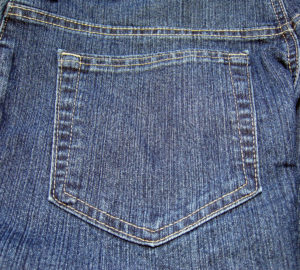
Slit pockets
One of the most prevalent sorts of pockets found in clothing is this one. You’ve probably seen this in the rear of your pants. We can see only the slits of the pockets from the outside, hence the name. The slit has a pocket bag attached to it.
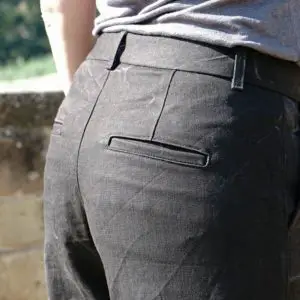
Post box pockets
This pocket is a hybrid of a welt and a patch pocket. The patch is merely a decorative piece that wraps around the slit pocket in the opening.
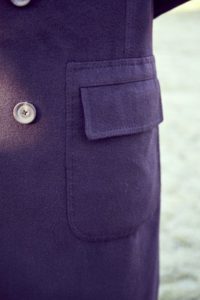
Here are some other types of pockets:
Faux pockets are a type of closed pocket that is commonly found on jeggings.
Pork chop pockets are a type of large oversized front pocket found on jeans and pants.
Additionally, there are several types of jeans pocket including
- Carpenter utility pockets,
- Embellished pockets,
- Flap pockets with buttons,
- Flap pockets with belt,
- Rectangular patch pockets,
- Rectangular patch pockets with diagonal opening,
- Embellished diagonal pockets,
- Stitched rounded pockets,
- Traditional pockets,
- Traditional five pocket,
- Patch zippered pockets,
- Diagonal with zippered coin pockets,
- Slit pocket with zippers.
Pockets are quite practical, beautiful, and might be the ideal spot to keep hands warm during cold winter days. What do you use your pockets for?
What are the different types of pockets?
Types of POCKETS | Best Style Guide Patch Pockets. Side Seam Pockets. Flap Pockets. Zippered Pockets. Hidden Pockets. Expanding Pockets and Cargo Pockets. Kangaroo Pockets. Draped Pockets. More items…
What are the three main types of pockets?
What are the three main types of pockets? The 3 main types of pockets are patch pockets, flap pockets, and side seam pockets. The basic design is called a patch pocket, the flap version of the patch pocket is a flap pocket and the side pocket blends into the seam and is a secretive pocket.
What are pant pockets called?
Slash Pocket Image via Jonathan Trumbull. Also known as ‘slant’ pockets, slash pockets commonly appear on pants, slacks, and jackets. These pockets are set into the garment on an angle, allowing the wearer to slide their hands in and out easily. 27-Jun-2019
What is a side slit pocket?
(Clothing & Fashion) a pocket on the underside of a garment, reached through a vertical opening.
What are functional pockets?
Functional pockets are usually sewn shut with a single thread. If you cut it and tug, it should unravel easily. If the stitching is hard to remove, it’s probably not a real pocket. Whatever suits you! 16-Nov-2017
What is a bellow pocket?
Definition of bellows pocket : a pocket with an expansion pleat applied to the outside of a garment.
What is an L pocket?
Oval L-Pockets: Small, discreet anchorage that sits on the floor surface.
What is facing and interfacing?
A shaped facing is a separate piece of fabric cut from a pattern to the same shape and on the same grain as the garment edge it will finish. Interfacing should be applied to the facing piece of fabric, prior to any stitching. … Stitch the facing together at the shoulder seams.
How many types of plackets are there?
There are four types of plackets for the modern man, which serves different roles in making a shirt: buttoning with no front placket, buttoning with placket, hidden buttons and popover. Each of these laces serves to adapt the dress shirt to different occasions of use. What are jean style pockets called?
It’s known as the coin pocket, the watch pocket, or the match pocket.
What does 5 pocket styling mean?
Pockets: As you might expect, 5-pocket pants have five pockets: two rear, two front hip, and one watch or coin pocket inside the right front hip pocket. … The hem is about 5/16″ wide and secured with a chain stitch, making it much narrower than the hem found on casual pants and dress pants, which is about 1.5″.
What is a flap pocket?
A flap pocket is usually nothing more than a jetted pocket (see above) with a flap of fabric stitched to the upper welt. … You can tuck the flaps inside the pocket for a more streamlined look. The patch pocket. From a tailoring perspective, the patch pocket is as straightforward as it gets.
What are scoop pockets?
These pockets are a little more involved than in-seam pockets but still easy enough for a beginner to sew. These pockets are scooped out of the front of the skirt and the pocket pattern piece will be visible when the garment is finished.
What are invisible pockets?
These are secret pockets that are sewn to the inside of garments to safeguard your belongings. This is usually additionally added and is not visible from the outside.
